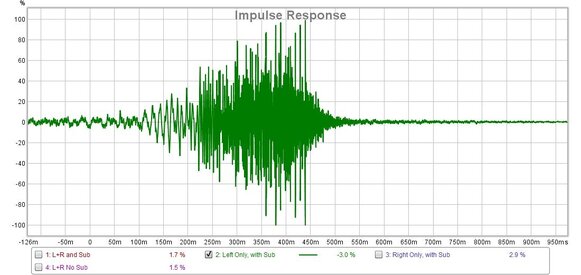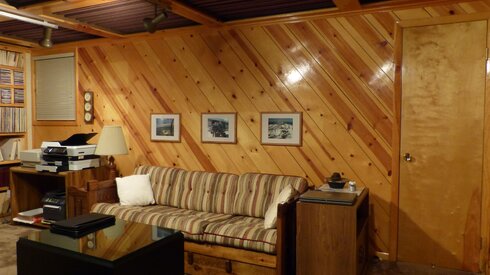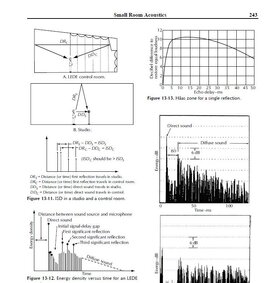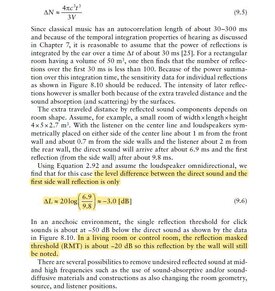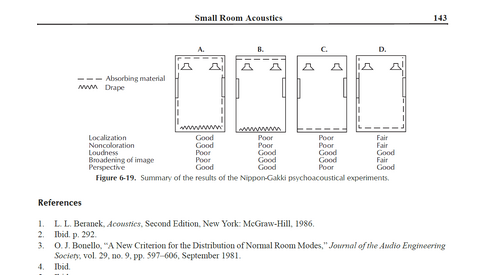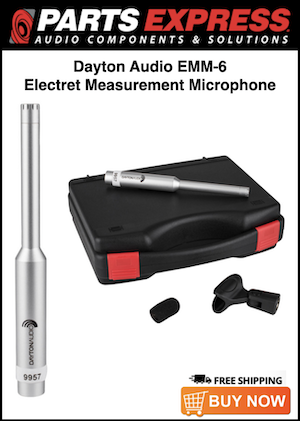Jeff Weissert
New Member
More
- Preamp, Processor or Receiver
- Denon PRA 1500
- Main Amp
- Mcintosh MC 60, modified, SS rectifiers
- Additional Amp
- Nelson Pass, Amp Camp 1.6 for HF Horns
- Other Amp
- Velodyne ULD-18 amp
- Universal / Blu-ray / CD Player
- Denon DCm-340
- Front Speakers
- Altec Voice of the Theater
- Subwoofers
- Velodyine ULD-18
I need help on my listening room that I made thirty five years ago…
I made it but then due to the WAF it sat mostly as a museum. Now that I am retired I want to tune the acoustics of this space.
With the advent of REW now it has showed modes and other ugly things that would have been theories when I made the room! Life was simpler before I saw the REW output!
I have a Helmholtz resonator back wall that I can bet is not tuned to the right frequency and not using the correct absorbent material… I used 7” of pink insulation back then.
I am using 4 Altec Voice of the Theater cabinets and two Altec 511B horns. There is also a Velodyne ULD-18 subwoofer. The Voice of the Theater cabinets were just updated to use GPA 416-16b woofers.
The Room is 19’x 13’x 7.5’. Two walls are double wall frame construction covered with 5/8” particle board and ½” drywall over the particle board.
The walls behind the Helmholtz and the bookshelves are block.
There is a small room behind the racks and one behind the speakers. The room space behind the speakers is 4’ deep.
The ceiling has Auralex Acoustics 2 inch Wedge Metro Studio Foam Sound Absorption Panels
I saw a web reference indicating that the woofers are “too big” for the room… well if that’s true I sure knocked it out of the park.
I was considering taking some of the Helmholtz wall down and installing a large bass trap… After reading posts from Matthew Poes it sounds like it would be hard to have too much bass absorption. I could take down 8-10’ of the Helmholtz wall and use the space for a trap.
The current wall face is 9” from Styrofoam insulation glued to the outside basement block wall.
My listening position is such that the back of my head is 14” from that Helmholtz wall… if I lean forward it does sound better.
I am uploading the .mdat
Measurement #1, L+R and Sub
Measurement #2, Left and Sub
Measurement #3 Right and Sub
Measurement #4 L+R with Sub turned down all the way, Note though the woofers/amp were driven from the High pass in the Velodyne amp so there is that roll off.
Any input would be appreciated….
Jeff
I made it but then due to the WAF it sat mostly as a museum. Now that I am retired I want to tune the acoustics of this space.
With the advent of REW now it has showed modes and other ugly things that would have been theories when I made the room! Life was simpler before I saw the REW output!
I have a Helmholtz resonator back wall that I can bet is not tuned to the right frequency and not using the correct absorbent material… I used 7” of pink insulation back then.
I am using 4 Altec Voice of the Theater cabinets and two Altec 511B horns. There is also a Velodyne ULD-18 subwoofer. The Voice of the Theater cabinets were just updated to use GPA 416-16b woofers.
The Room is 19’x 13’x 7.5’. Two walls are double wall frame construction covered with 5/8” particle board and ½” drywall over the particle board.
The walls behind the Helmholtz and the bookshelves are block.
There is a small room behind the racks and one behind the speakers. The room space behind the speakers is 4’ deep.
The ceiling has Auralex Acoustics 2 inch Wedge Metro Studio Foam Sound Absorption Panels
I saw a web reference indicating that the woofers are “too big” for the room… well if that’s true I sure knocked it out of the park.
I was considering taking some of the Helmholtz wall down and installing a large bass trap… After reading posts from Matthew Poes it sounds like it would be hard to have too much bass absorption. I could take down 8-10’ of the Helmholtz wall and use the space for a trap.
The current wall face is 9” from Styrofoam insulation glued to the outside basement block wall.
My listening position is such that the back of my head is 14” from that Helmholtz wall… if I lean forward it does sound better.
I am uploading the .mdat
Measurement #1, L+R and Sub
Measurement #2, Left and Sub
Measurement #3 Right and Sub
Measurement #4 L+R with Sub turned down all the way, Note though the woofers/amp were driven from the High pass in the Velodyne amp so there is that roll off.
Any input would be appreciated….
Jeff











